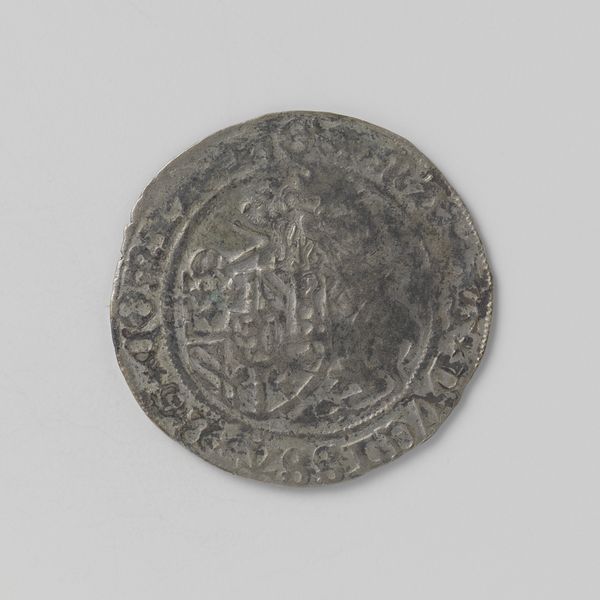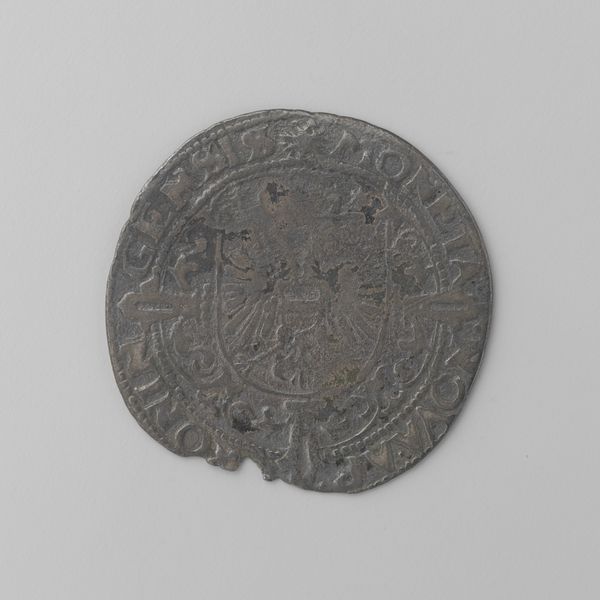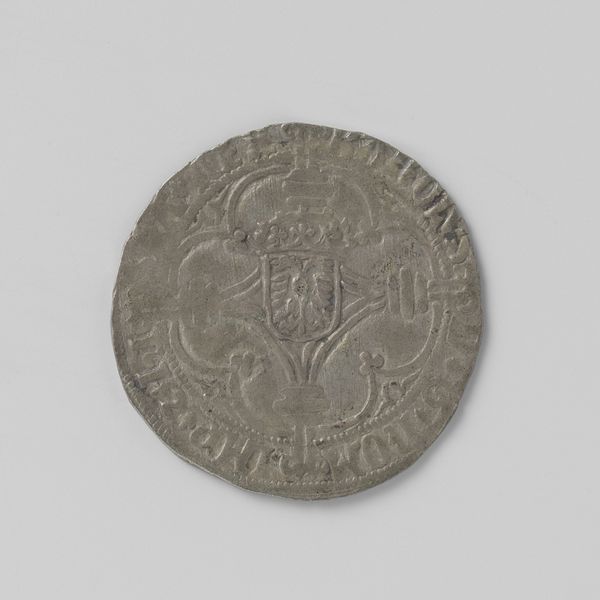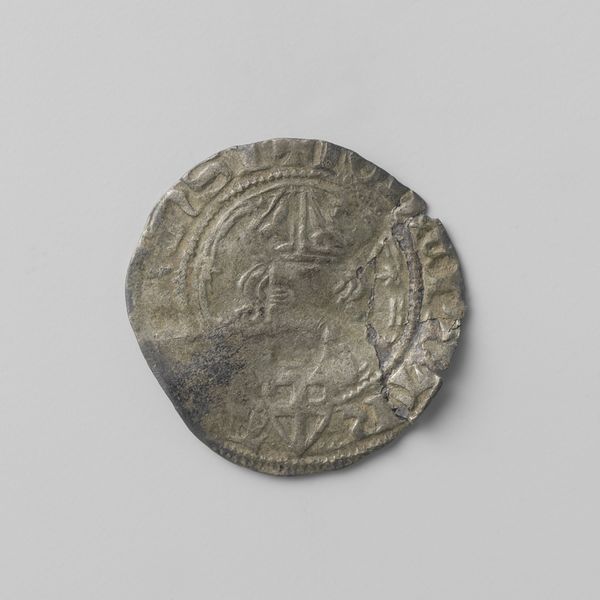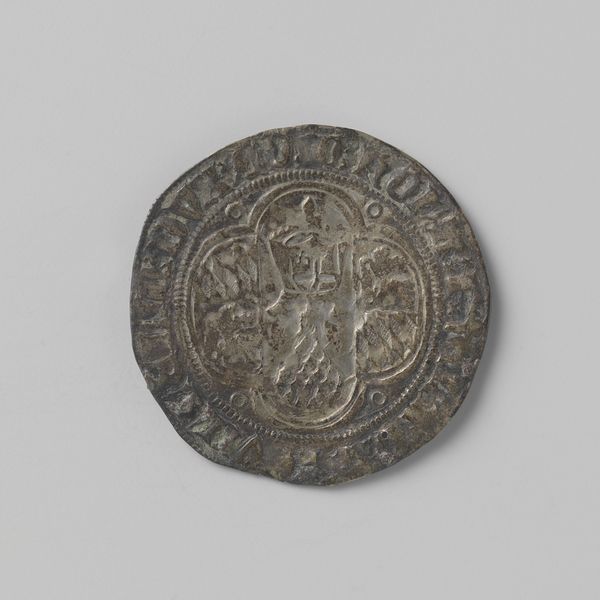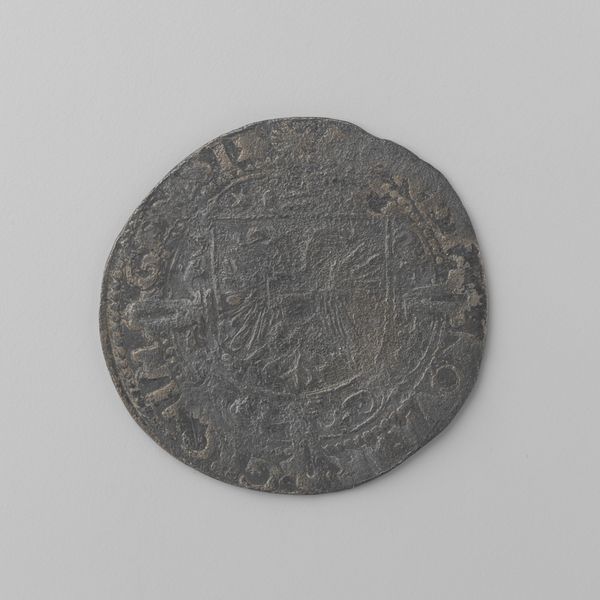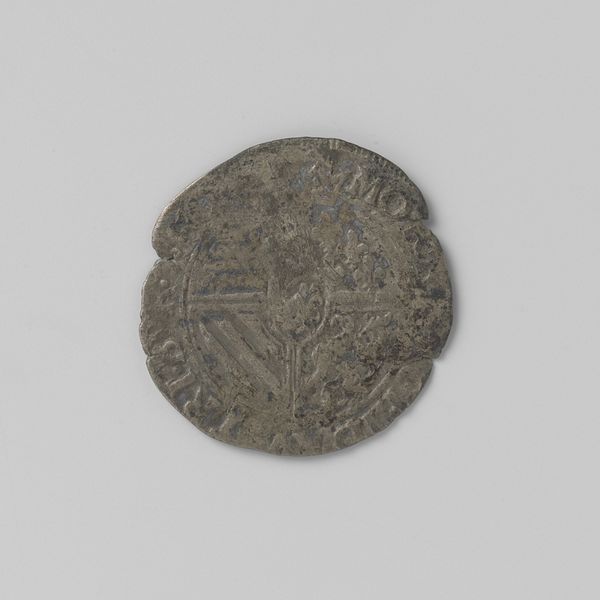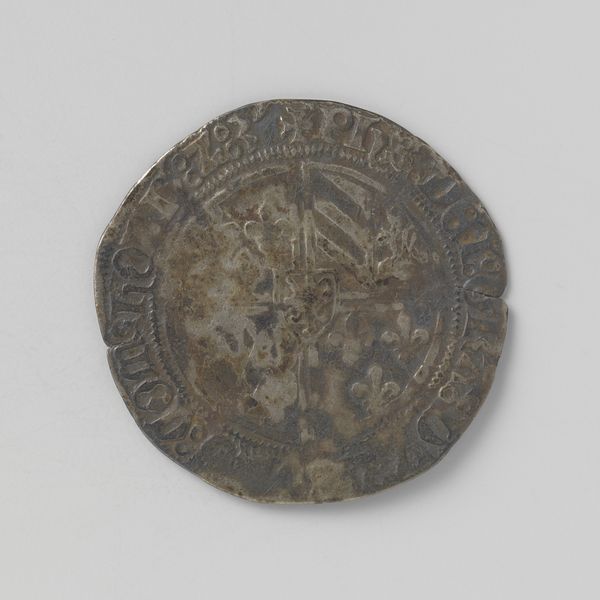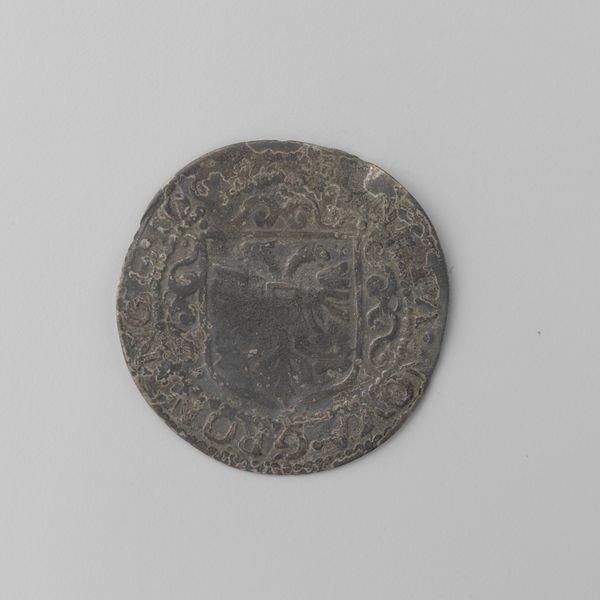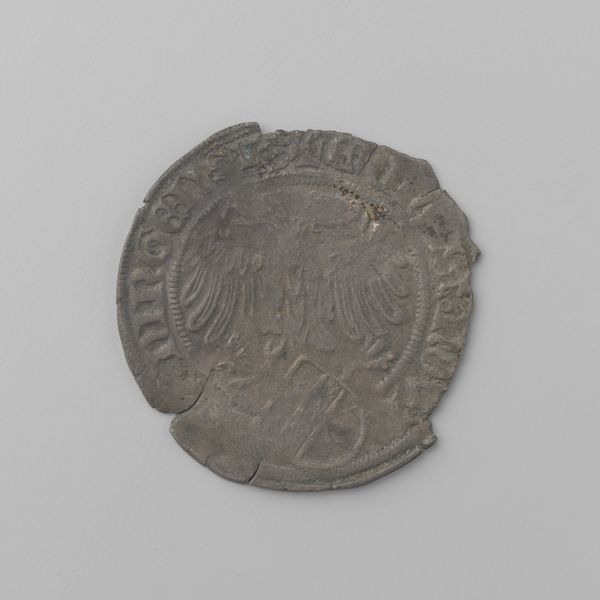
Hollandse stuiver van Karel V, 1506-1555 1521 - 1529
0:00
0:00
metal, sculpture
#
portrait
#
medieval
#
metal
#
ancient-mediterranean
#
sculpture
#
coin
Dimensions: diameter 2.8 cm, weight 2.74 gr
Copyright: Rijks Museum: Open Domain
Editor: This is a Hollandse stuiver, or Dutch penny, of Charles V, dating from the 1520s. It’s a small, silver coin on display at the Rijksmuseum. What strikes me most is the worn texture and how much history must be embedded within such a small object. What do you see in this piece? Curator: I see a powerful object, deeply embedded in the political and social context of the 16th century. Consider Charles V's reign, marked by immense power and colonial expansion, but also intense religious conflict. This small coin served not only as a means of exchange but as a tool for propagating imperial authority. The portrait, though stylized, reinforced his image and projected power. It begs the question: How did seemingly insignificant items like currency shape perceptions of power and authority in this era, and even today? Editor: So, the very act of handling the coin becomes a transaction beyond its monetary value? Curator: Exactly! Think of it as a form of early propaganda, subtly influencing people's perception of the ruler and reinforcing social hierarchies. Who controlled the creation and distribution of currency and how does that impact various demographics of society? These objects were rarely neutral. They were actively participating in power structures of the time. Editor: That makes me consider the weight we give to the symbolic value of money, even now. Thanks! Curator: My pleasure! Examining art through a social lens offers such critical perspectives and connections to our contemporary world.
Comments
No comments
Be the first to comment and join the conversation on the ultimate creative platform.



